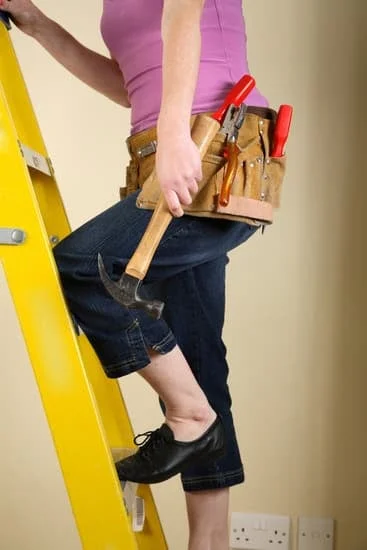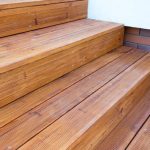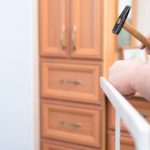Do you want to know how to improve wall insulation in the home? Proper wall insulation is crucial for maintaining a comfortable and energy-efficient home. In this article, we will explore different types of insulation materials, provide tips on assessing your current insulation, offer DIY methods for improving wall insulation, and discuss the benefits of hiring a professional.
Additionally, we will cover how to seal air leaks, provide additional tips for improving wall insulation, and offer advice on maintenance. By the end of this article, you will have a comprehensive understanding of the importance of wall insulation and how to enhance it in your own home.
When it comes to creating a comfortable living environment and reducing energy costs, the importance of wall insulation cannot be overstated. Insufficient or poorly-performing insulation can lead to drafts, uneven temperatures within a home, and increased energy consumption. To address these issues, it’s essential to understand the various types of wall insulation materials available and how they can effectively improve the comfort and energy efficiency of your home.
In the following sections, we will delve into different types of wall insulation materials such as fiberglass, cellulose, foam, and reflective insulation. We will also provide guidance on assessing your current insulation and identifying areas for improvement. Whether you choose to take a do-it-yourself approach or hire a professional, this article will equip you with the knowledge needed to make informed decisions about improving your home’s wall insulation.
Types of Wall Insulation Materials
When it comes to improving wall insulation in the home, choosing the right insulation material is crucial. There are several options available, each with its own set of advantages and considerations. One popular option is fiberglass insulation, which is known for its affordability and effectiveness in reducing heat transfer. This type of insulation can be installed as batts or blown-in, making it versatile for different wall structures.
Another common choice for wall insulation is cellulose. Made from recycled paper treated with fire-retardant chemicals, cellulose insulation is environmentally friendly and provides excellent resistance to heat flow. It can be blown into walls, filling gaps and crevices to create a seamless barrier against thermal transfer.
Foam insulation, whether it’s in the form of spray foam or rigid foam boards, offers superior insulating properties and can effectively seal air leaks. While foam insulation tends to be more expensive than other materials, its high R-value and durability make it a worthwhile investment for long-term energy savings.
Reflective insulation, often used in conjunction with other types of insulation, works by reflecting radiant heat away from the interior of the home. This type of insulation is particularly effective in hot climates where reducing heat gain is a priority. By exploring these different options for wall insulation materials, homeowners can make informed decisions based on their specific needs and budget constraints.
Assessing Current Insulation
When it comes to improving wall insulation in your home, the first step is to assess the current situation. This involves determining the type of insulation already in place and identifying any areas that may need improvement. One way to do this is by conducting a visual inspection of your walls.
Look for signs of existing insulation such as fiberglass batts, loose-fill cellulose, or foam boards. Additionally, you can also check for any drafts or temperature variations in different areas of your home, which could indicate insufficient insulation.
In addition to a visual inspection, you can also conduct a more thorough assessment by performing an energy audit. This can be done using a thermal imaging camera to identify areas of heat loss within the walls. Another option is to hire a professional energy auditor who can use specialized equipment to detect air leaks and measure the effectiveness of your current insulation. By pinpointing areas that are not adequately insulated, you can prioritize those spaces for improvement.
Once you have determined the existing insulation in your walls and identified areas for improvement, you can then decide on the best course of action. Whether you choose to tackle the project yourself or hire a professional, addressing any weaknesses in your wall insulation will help enhance both the comfort and energy efficiency of your home.
| Types of Wall Insulation Materials | Advantages |
|---|---|
| Fiberglass | Durable and fire-resistant |
| Cellulose | Eco-friendly and provides good soundproofing |
| Foam | High R-value and effective at sealing air leaks |
| Reflective Insulation | Reduces radiant heat transfer and easy to install |
DIY Wall Insulation
Improving wall insulation using do-it-yourself (DIY) methods and materials is a cost-effective way to make your home more energy-efficient and comfortable. By taking the time to properly insulate your walls, you can reduce heat loss, minimize drafts, and lower your energy bills. Below is a step-by-step guide on how to improve wall insulation using DIY methods and materials:
- Evaluate the existing insulation: Start by assessing the current insulation in your walls. Determine the type of insulation material that is currently in place and identify any areas that may be lacking adequate insulation.
- Choose the right insulation material: Select the appropriate insulation material for your walls based on factors such as R-value, moisture resistance, and ease of installation. Common DIY options include fiberglass batts, cellulose blown-in insulation, or foam board insulation.
- Prepare the work area: Before installing new insulation, it’s important to prepare the work area by clearing any obstructions, removing old or damaged insulation, and ensuring proper ventilation.
Once you have completed these initial steps, you can proceed with the actual installation of the new insulation following manufacturer guidelines and safety precautions. Be sure to pay attention to detail and take your time to ensure a thorough and effective job.
Improving wall insulation through DIY methods not only helps save on energy costs but also contributes to a more sustainable living environment. With proper planning and execution, you can achieve improved wall insulation that enhances the comfort and energy efficiency of your home for years to come.
Hiring a Professional
When it comes to upgrading wall insulation, hiring a professional can offer numerous benefits and ensure that the job is done correctly. Professionals have the expertise and experience to assess the specific needs of your home and recommend the most effective insulation solutions. Here are some key benefits of hiring a professional for wall insulation:
- Expert advice: Professionals can assess your home’s unique insulation needs and recommend the best materials and methods for improving energy efficiency.
- Quality installation: Professional installers have the skills and tools necessary to install insulation properly, ensuring maximum effectiveness.
- Time and cost savings: While DIY insulation projects may seem cost-effective at first, hiring a professional can actually save time and money in the long run by avoiding potential mistakes and rework.
The process of hiring a professional for wall insulation typically involves several key steps. First, you will need to research reputable insulation contractors in your area and obtain quotes for the project. Once you’ve selected a contractor, they will conduct an initial assessment of your home’s insulation needs and provide recommendations for improvement. After agreeing on a plan, the professional installer will schedule a time to complete the installation.
Ultimately, hiring a professional for wall insulation can provide peace of mind knowing that your home is properly insulated for maximum comfort and energy efficiency. With their expertise and knowledge, professionals can ensure that your investment in improved insulation pays off in the long term.
Sealing Air Leaks
Importance of Sealing Air Leaks
Air leaks in the walls can significantly compromise the effectiveness of wall insulation. These leaks allow for the exchange of indoor and outdoor air, leading to increased energy consumption and reduced comfort inside the home. Identifying and sealing these leaks is crucial in creating an airtight barrier that improves insulation and enhances energy efficiency.
Identifying Air Leaks
Before addressing air leaks, it is important to identify their locations. Common areas where air leaks occur include around windows and doors, electrical outlets, plumbing penetrations, and gaps in the walls or ceiling. One way to identify these leaks is by conducting a visual inspection, feeling for drafts with a hand, or using a thermal camera to detect temperature differences that indicate airflow.
Sealing Techniques
Once air leaks are identified, there are several effective sealing techniques that can be used to enhance wall insulation. Caulking and weather-stripping are common methods for sealing gaps around windows and doors. Expanding spray foam can be used to seal larger gaps or voids in the walls. Additionally, applying sealant or foam around electrical outlets and plumbing penetrations can help prevent air leakage.
By effectively identifying and sealing air leaks in the walls, homeowners can significantly improve the insulation of their homes while enhancing energy efficiency. This not only results in cost savings on energy bills but also creates a more comfortable living environment throughout the year.
Additional Tips for Improving Wall Insulation
When it comes to improving wall insulation in the home, there are a variety of additional tips and creative solutions that can further enhance the energy efficiency and comfort of your living space. In addition to traditional insulation materials, utilizing insulation boards and thermal wallpaper can provide innovative ways to minimize heat loss and reduce energy costs.
Insulation Boards
Insulation boards, also known as rigid foam insulation, are a popular choice for improving wall insulation. These boards are made from various materials such as polystyrene, polyisocyanurate, or polyurethane and can be installed on both interior and exterior walls. They provide a continuous layer of insulation with high thermal resistance, helping to maintain a consistent temperature within the home and reduce the transfer of heat through the walls.
Thermal Wallpaper
Thermal wallpaper is another creative solution for enhancing wall insulation. This specialized wallpaper contains thermal lining that acts as an additional barrier against heat loss. It can be applied directly onto interior walls, particularly in rooms where traditional insulation methods may be more challenging to implement. Thermal wallpaper not only improves insulation but also adds aesthetic appeal to the room decor.
In addition to these creative solutions, other tips for improving wall insulation include using weather-stripping around doors and windows, implementing passive solar heating strategies, and choosing energy-efficient window treatments. By exploring these alternative methods and incorporating them into your home improvement efforts, you can further maximize the benefits of improved wall insulation for long-term energy savings and comfort.
Maintaining Wall Insulation
Once you have improved the wall insulation in your home, it is important to take steps to maintain its effectiveness over time. Proper maintenance can help prolong the lifespan of the insulation and ensure that your home remains comfortable and energy-efficient. Here are some essential tips for maintaining wall insulation:
- Regular inspections: Schedule regular inspections of your wall insulation to check for any signs of damage or wear. Look for water damage, mold, or pest infestations that can compromise the effectiveness of the insulation. It’s important to address any issues promptly to prevent further damage.
- Sealing air leaks: As part of maintaining wall insulation, it’s essential to seal any air leaks that may develop over time. Check for gaps around windows, doors, and electrical outlets, as well as any cracks in the walls. Use caulk or weatherstripping to seal these areas and prevent heat loss.
- Cleaning and dusting: Keep your walls clean and free from dust and debris to ensure that the insulation functions properly. Dust accumulation can reduce the effectiveness of certain types of insulation, so regular cleaning is important.
Taking these maintenance steps can help prolong the effectiveness of your wall insulation and contribute to long-term energy savings in your home.
| Maintenance Tip | Description |
|---|---|
| Regular Inspections | Schedule inspections for signs of damage, water damage, mold, or pest infestations. |
| Sealing Air Leaks | Check windows, doors, electrical outlets, and cracks in walls for air leaks; seal using caulk or weatherstripping. |
| Cleaning and Dusting | Keep walls clean from dust and debris to ensure proper functionality. |
Conclusion
In conclusion, improving wall insulation is an essential aspect of maintaining a comfortable and energy-efficient home. Whether you choose to do it yourself or hire a professional, enhancing the insulation in your walls can make a significant impact on your overall comfort and energy savings. By understanding the different types of wall insulation materials available, assessing your current insulation, sealing air leaks, and implementing additional tips for improvement, you can effectively upgrade your home’s insulation.
One of the key takeaways from this article is the importance of maintaining and prolonging the effectiveness of wall insulation over time. Regularly checking for air leaks and ensuring that your insulation is in good condition can prevent energy loss and maintain a consistent level of comfort in your home. Additionally, investing in high-quality insulation materials and considering creative solutions such as thermal wallpaper or insulation boards can further enhance the overall performance of your wall insulation.
Ultimately, by taking proactive steps to improve wall insulation, homeowners can experience not only increased comfort but also significant cost savings on energy bills. The impact goes beyond just monetary savings – it also contributes to reducing energy consumption and environmental impact. Making the effort to upgrade wall insulation is a worthwhile investment that can lead to a more sustainable and comfortable living environment for years to come.
Frequently Asked Questions
Can You Improve Insulation to Existing Walls?
Yes, it is possible to improve the insulation in existing walls. One method involves adding insulation material, such as fiberglass or foam board, to the interior or exterior of the walls. Another option is to fill the wall cavities with insulation through a process called blow-in insulation.
How Do You Increase Insulation in Walls?
Increasing insulation in walls can be accomplished by adding additional insulation material to the existing wall structure. This can involve installing batt or rigid foam insulation between wall studs, filling wall cavities with loose-fill insulation, or applying spray foam insulation to create an airtight barrier.
How Can I Improve My Internal Wall Insulation?
Improving internal wall insulation can be achieved by adding insulation materials like drywall with an integrated layer of insulating foam, using insulating wallpaper, or applying insulated plasterboard. Additionally, addressing any gaps or air leaks within the walls can also help improve internal wall insulation by preventing heat loss and maximizing energy efficiency within the building.

I’m thrilled to have you here as a part of the Remodeling Top community. This is where my journey as an architect and remodeling enthusiast intersects with your passion for transforming houses into dream homes.





